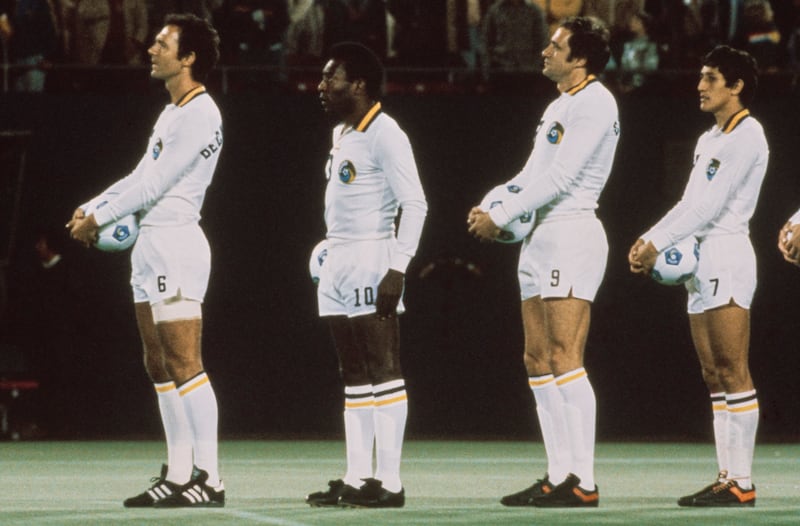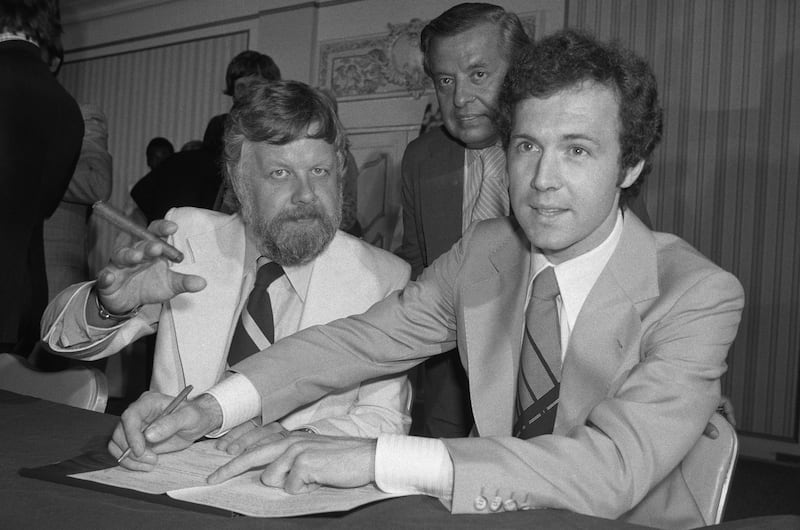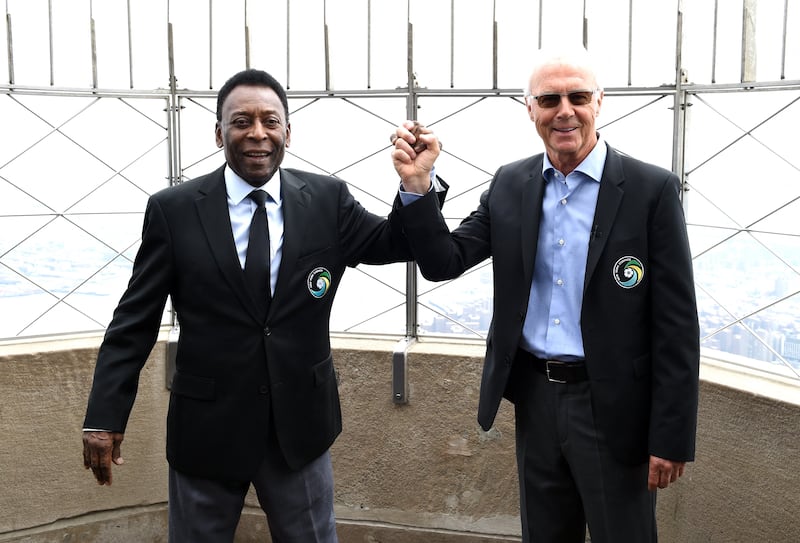Billed as $100m of soccer talent, a star-studded New York Cosmos met Australia at the Sydney Showground in October, 1979. In an era when the Socceroos rarely drew 10,000, four times that number of tickets were sold and the final attendance was swollen by another 10,000 or so fans hopping the fences. When the two captains led their teams on to the field, the noise greeting the high-profile visitors was like nothing the home side had ever heard. At which point, Franz Beckenbauer turned to Tony Henderson, his opposite number, and with a grin, quipped: “Well, you’re very popular here.”
As part of a morale-boosting exercise, badly needed in a locker room full of gargantuan egos, the Cosmos once hired out a corporate box at a harness racing track in New Jersey. Steve Hunt, a 20-year-old Brummie winger whom hard-up Aston Villa had sold to New York to fund the construction of a new stand at the Witton End, brought along his mother, then visiting him from England. Throughout the evening, Beckenbauer, somebody Hunt used to regularly torment about 1966, regularly checked on her welfare and made sure her glass was always full.
“The first thing I want to say about Franz is that he is a smashing bloke,” wrote the Englishman in his autobiography. “My mum has never forgotten the fuss the Kaiser made of her.”
Given everything else he achieved, Beckenbauer’s four seasons with the Cosmos are often relegated to the footnotes. But, here, he left an indelible mark too. Unlike Pelé, the German was just 31 and not far off his prime when he signed, the club’s decision to fly him by helicopter from the roof of the Pan-Am Building to Giants Stadium apparently clinching the deal. He was so eager to come he partly financed his exit from an in-decline Bayern Munich, paying them 350,000 marks out of his own pocket. Emphasising his diligence, he touched down in New York with 14 pairs of boots in his luggage, 13 specifically designed for the unforgiving AstroTurf then popular in the North American Soccer League (NASL).
Five that can stop Scottie Scheffler at the Masters
Joey Carbery enjoying the good life in France both on and off the pitch
Drogheda defying the odds as attendances continue to soar – what we learned from Friday’s League of Ireland action
‘I’m not an easy man to please’: How Christy Ring and Louis Marcus came together to shoot a landmark film

“I came for privacy,” said Beckenbauer, whose personal life and business affairs had become regular tabloid fodder back home. “It had become crazy in Germany. I was always observed, everywhere I went. Everybody looks at his neighbours in Germany. Who has a bigger refrigerator? Who has a nicer house? Who drives a Mercedes? The style in America is different. I was in a restaurant in Manhattan where Woody Allen and Diane Keaton were. Everybody knew they were there but didn’t care. People noticed them but did not bother them. You are freer here.”
[ Franz Beckenbauer death: The complete modern footballer, always ahead of his timeOpens in new window ]
As with Pelé’s integration earlier, there were teething problems. During his first game against the Tampa Bay Rowdies, he found the Florida heat sapping and suffered communication issues. When Shep Messing, the Cosmos custodian, roared “goalkeeper” while failing to collect a cross, Beckenbauer turned with a glare and said, “Don’t speak, go back in the goal and I will make everything come to you.” Messing, ordinarily a mouthy character, replied timidly, “Okay, Kaiser, you got it, Kaiser!”

His prowess as sweeper redefined the position globally but was lost on Steve Ross, the flamboyant Warner Bros chief executive and club owner. Unimpressed by the new signing lording it at the back on his debut, he phoned the dugout and shouted, “Get the Kraut into midfield! We’re not paying him all that money [$2.8m for four years] to play deefence!” Although 1977 is always remembered as Pele’s last season, Beckenbauer finished that championship-winning campaign as the league’s Most Valuable Player (MVP), his form remaining so good that the following year there was talk of Germany trying to get him released for the 1978 World Cup.
[ Pelé and the Cosmos: How the Brazilian conquered AmericaOpens in new window ]
As much as he relished living on Central Park South in a building where he became friends with the dancer Rudolf Nureyev, and could walk to his beloved Metropolitan Opera, it was a bizarre time in the sport in America. One ditsy Cosmos executive wondered why they couldn’t ask Pelé and Beckenbauer to stand in the centre-circle doing keepy-uppies for a few minutes each before every game. Like performing seals.

Beckenbauer led the Cosmos to three titles in four years and, assisted by a rotating cast of marquee names, shattered soccer box office records. Quite a feat given the constant turmoil involving Giorgio Chinaglia (always jealous of team-mates), Vladislav Bogicevic (Yugoslav midfield maestro who hogged the ball), Johan Neeskens (overfond of going awol) and a waning Carlos Alberto. To accommodate the Brazilian, Beckenbauer played a lot in midfield, a reluctant switch he made for the good of the team.
Even though he delivered more trophies, he was never quite adored like the charismatic Pelé had been. Still, over 71,000 turned up for his farewell game, a friendly between the Cosmos and an NASL select XI at Giants Stadium on a Wednesday night in September 1980.
“Thank you for being the most beautiful people in the world and the best fans,” said Beckenbauer during an on-field speech at half-time. “I will think of everything that you did in the last four years. You’ve always made me feel that you liked me. Good health, good luck, and I love you.”
Fifteen minutes into the second half, he got injured, waved briefly to the crowd, and headed down the tunnel, never re-emerging for an expected post-match lap of honour. The brusque goodbye, like everything about his time here, very much in character.

















